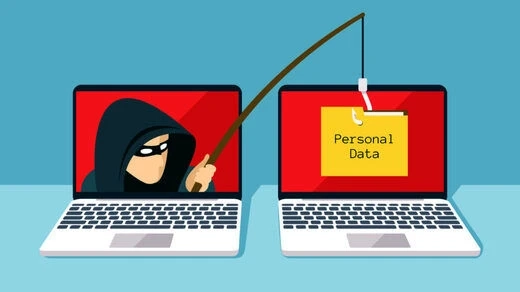Phishing is a cybercrime technique used to deceive individuals into revealing sensitive information such as usernames, passwords, and credit card numbers by disguising as a trustworthy entity in electronic communications. This malicious activity exploits human psychology, relying on social engineering tactics to manipulate victims into performing actions that compromise their security. This essay delves into the origins, methods, impact, and preventive measures associated with phishing, providing a thorough understanding of this pervasive threat.
Origins of Phishing
The term "phishing" is a play on the word "fishing," where attackers bait users into providing their private information. The first recorded use of phishing dates back to the mid-1990s, during the early days of the internet. Hackers used AOL (America Online) to lure unsuspecting users into revealing their login credentials. These early attacks were relatively simple, exploiting the lack of user awareness about online security. As the internet evolved, so did phishing techniques, becoming more sophisticated and difficult to detect.
Common Phishing Methods
Phishing attacks can take various forms, each tailored to exploit specific vulnerabilities. Some of the most common methods include:
Email Phishing: This is the most prevalent form of phishing. Attackers send emails that appear to come from legitimate sources such as banks, social media platforms, or online services. These emails often contain urgent messages, prompting recipients to click on malicious links or download infected attachments.
Spear Phishing: Unlike generic email phishing, spear phishing targets specific individuals or organizations. Attackers gather personal information about their targets to craft convincing and personalized messages. This increases the likelihood of success, as the emails appear more legitimate.
Whaling: A subset of spear phishing, whaling targets high-profile individuals such as executives or senior officials within an organization. The goal is to gain access to sensitive corporate information or financial assets.
Smishing: This method uses SMS or text messages to lure victims. Attackers send messages containing malicious links or prompts to call a fake customer service number. As mobile usage increases, smishing has become a significant threat.
Vishing: Similar to smishing, vishing involves voice calls. Attackers impersonate legitimate entities such as banks or government agencies, convincing victims to provide sensitive information over the phone.
Clone Phishing: In this method, attackers create a nearly identical copy of a legitimate email that the victim has previously received. The cloned email contains a malicious link or attachment, tricking the victim into believing it is a follow-up to the original message.
Pharming: This technique redirects users from legitimate websites to fraudulent ones without their knowledge. Attackers manipulate the DNS (Domain Name System) settings to achieve this, making it difficult for victims to realize they are on a fake site.
Impact of Phishing
Phishing can have severe consequences for individuals and organizations. The impact includes financial losses, reputational damage, and compromised security. Some of the significant effects are:
Financial Loss: Victims may lose money directly through fraudulent transactions or indirectly through identity theft. Phishing can also result in unauthorized access to bank accounts, credit cards, and other financial assets.
Data Breaches: Phishing attacks can lead to massive data breaches, exposing sensitive information such as customer records, intellectual property, and confidential business data. This can result in legal liabilities and loss of trust among customers.
Reputation Damage: Organizations targeted by phishing may suffer reputational harm, especially if the attack becomes public. Customers may lose confidence in the company\'s ability to protect their information, leading to a decline in business.
Operational Disruption: Phishing attacks can disrupt business operations by infecting systems with malware or ransomware. This can halt productivity, necessitate costly recovery efforts, and compromise long-term business continuity.
Legal Consequences: Organizations may face legal penalties and regulatory fines if they fail to protect sensitive data adequately. Compliance with data protection laws such as GDPR (General Data Protection Regulation) is critical, and phishing attacks can jeopardize compliance efforts.
Preventive Measures
Preventing phishing attacks requires a multi-faceted approach that combines technological solutions, user education, and robust security practices. Key preventive measures include:
Awareness Training: Educating employees and individuals about the risks and signs of phishing is crucial. Regular training sessions can help users recognize suspicious emails, links, and attachments.
Email Filtering: Implementing advanced email filtering solutions can help detect and block phishing emails before they reach users\' inboxes. These filters analyze email content, sender information, and embedded links for signs of phishing.
Two-Factor Authentication (2FA): Enabling 2FA adds an extra layer of security by requiring users to provide two forms of verification before accessing accounts. This makes it more difficult for attackers to gain access even if they obtain login credentials.
Anti-Phishing Software: Deploying anti-phishing software and browser extensions can help detect and block malicious websites. These tools analyze website URLs and content to identify potential threats.
Regular Updates: Keeping software, operating systems, and security applications up to date is essential. Updates often include patches for known vulnerabilities that attackers could exploit.
Incident Response Plan: Having a well-defined incident response plan ensures that organizations can quickly and effectively respond to phishing attacks. This includes steps for containing the threat, notifying affected parties, and recovering compromised systems.
Phishing Simulations: Conducting regular phishing simulations can help assess the effectiveness of awareness training and identify areas for improvement. These simulated attacks test users\' ability to recognize and report phishing attempts.
Secure Network Configuration: Ensuring that network configurations are secure can prevent attackers from redirecting traffic to fraudulent websites. This includes properly configuring DNS settings and implementing security protocols.
Phishing remains one of the most prevalent and damaging cyber threats. Its success lies in exploiting human psychology and technological vulnerabilities. Understanding the various methods of phishing, the potential impacts, and the preventive measures is crucial in combating this threat. By combining user education, advanced security technologies, and robust organizational practices, individuals and organizations can significantly reduce the risk of falling victim to phishing attacks. As cyber threats continue to evolve, staying vigilant and proactive is essential in maintaining a secure online environment.


